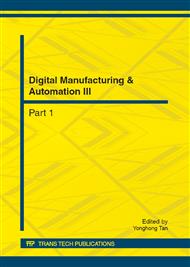p.1179
p.1183
p.1187
p.1191
p.1195
p.1198
p.1207
p.1214
p.1220
The Pitch Control Strategy with the Clonal Selection on Quantum Genetic Algorithm
Abstract:
This chapter reviews the objectives and techniques used in the control of wind turbines at the individual turbine level, where controls are applied to the turbine blade pitch and generator. The paper analyses the control strategy of the wind power generation, optimizes the power output energy conversion factor of the optimal tip-speed ratio and the optimal tip-speed ratio using the clonal selection on quantum genetic algorithm. After reviewing basic turbine control objectives, we provide an overview of the common basic linear control approaches and then describe more advanced control architectures and why they may provide significant advantages.
Info:
Periodical:
Pages:
1195-1197
Citation:
Online since:
July 2012
Authors:
Keywords:
Price:
Сopyright:
© 2012 Trans Tech Publications Ltd. All Rights Reserved
Share:
Citation:


